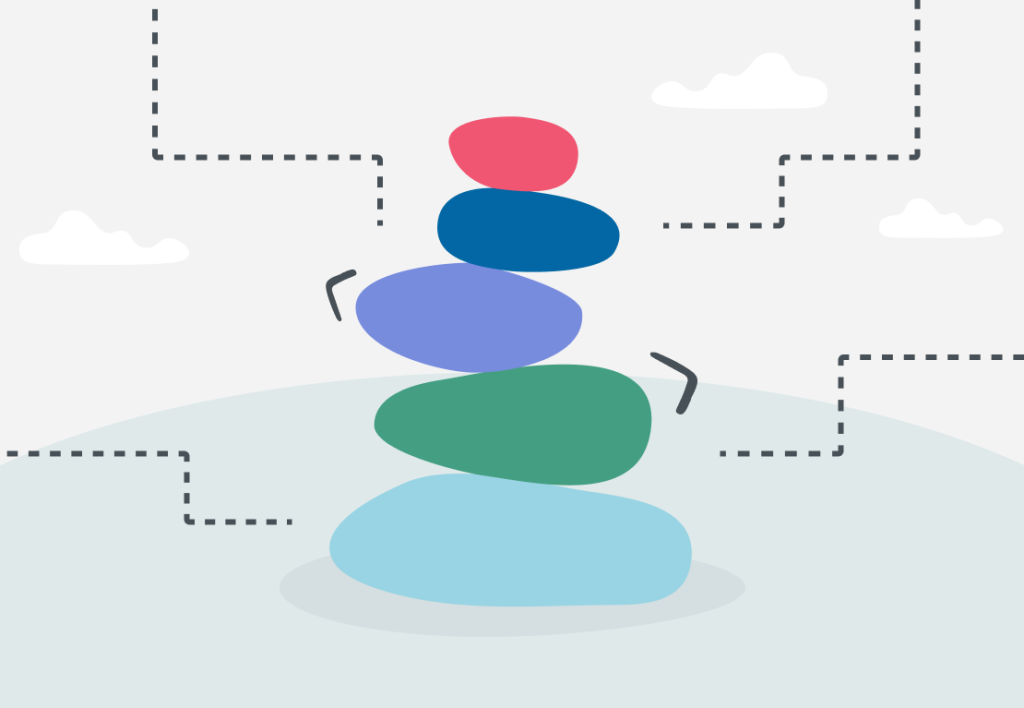What you need to know before choosing a tech stack

When it comes to creating an application, one of the key decisions you’ll encounter is picking the right tech stack. This choice will shape the development process – and ultimately determine how your app will function.
In this blog post, we’ll look at what you need to know before choosing a tech stack. We’ll talk about all the most important considerations: project requirements, budget, security, and the skills your team brings to the table. By the end, you’ll be in a better position to choose the right combination for your project’s success.
Want to get the most out of your time?
Try DeskTime for free!
Try free for 14 days · No credit card required.
By signing up, you agree to our terms and privacy policy.

What is a tech stack?
A tech stack (also known as a developer stack or IT stack) is a set of technologies used to build websites, web apps, or mobile apps. It consists of two main components: the front end and the back end.
The front end tech stack, also known as the client side, is responsible for the visual interface that users interact with. The backend tech stack, or server side, supports the inner workings of a website or app. It includes programming languages, frameworks, databases, and servers.
Together, these components form the technology stack, providing the foundation for developing and running applications.
Why the choice of a tech stack matters
Your choice of tech stack plays a crucial role in determining the type of app you can build and the specialists you’ll need to hire. Developers specialize in specific technologies since there are too many for one person to master.
Every tech stack has its strengths and weaknesses. Some offer advanced customization options, while others excel in scalability. Some stacks are well suited for rapid app development, and others have a steeper learning curve.
While changing your tech stack during a project is possible, it’s a massive undertaking. That’s why it’s crucial to decide on a tech stack before diving into any serious development work.
5 things to consider when choosing a tech stack
1. What kind of project are you developing?
The first step in choosing a tech stack is evaluating the type and size of your project. Are you building a small web application or a large-scale enterprise system? Is it an e-commerce platform or a mobile app? Each project type would benefit from different tools, frameworks, and languages.
You should also consider the expected growth and scalability requirements of your project. If you anticipate a significant expansion in terms of the user base, data volume, or functionality, opt for a technology stack that can handle such scalability challenges.

2. Budget considerations
Tech stacks come with different price tags, and your expenses can vary based on several factors:
- Hosting costs: The expenses associated with hosting your application or website on servers
- Developer salaries: The costs of hiring and retaining developers who specialize in the chosen tech stack
- Technology licensing fees: Some tech stacks may require paid licenses or subscriptions for certain components or tools
- Maintenance costs: Ongoing expenses for updates, bug fixes, security patches, and technical support
Generally, more advanced and sophisticated technologies come with higher costs. To minimize costs, many companies opt for open-source technologies. These are freely available and often have strong community backing, making them a cost-effective choice.
3. How much time do you have on your hands?
The speed at which you aim to launch your project will also influence the selection of your tech stack. If you have a tight deadline, opting for familiar technologies and frameworks will be advantageous.
Certain tech stacks may require a bit more time and effort to set up the development environment. This could involve tasks such as installing and configuring various software components, establishing database connections, and configuring server settings.
On the other hand, there are tech stacks that prioritize ease of setup and provide streamlined processes. With these stacks, developers can hit the ground running and start coding without getting entangled in complex configuration procedures.

4. Your team’s skill set
When it comes to choosing a tech stack, don’t forget to consider your team’s expertise – you will need developers capable of using it. If your team excels in a particular programming language or framework, it’s a good idea to capitalize on their strengths and choose a stack that revolves around those technologies.
However, If your team lacks expertise in the chosen tech stack, you need to consider whether your developers can learn on the job without causing delays or if you should hire additional talent. But keep in mind that more complex technology stacks often require developers with more experience and specific skills, which can make it more challenging to find the right talent.
5. Security considerations
It’s important to understand that security is not inherently built into a specific tech stack.
In fact, almost every tech stack offers ample tooling and resources to build highly secure solutions, even for industries with strict security requirements like fintech or HIPAA compliance. From robust encryption methods to authentication protocols, there are plenty of options available to ensure the safety of sensitive data and protect against potential breaches.
While certain tech stacks may provide built-in security features or libraries, it’s ultimately the responsibility of the development team to utilize them effectively.
Exploring popular tech stacks
Now, let’s take a closer look at some tech stack examples. This will give you a better idea of how some of the most popular stacks differ from each other. You don’t have to go with these particular stacks, but they have a solid track record, making them a viable option if they meet your development requirements.
LAMP Stack
The LAMP (Linux, Apache, MySQL, PHP) tech stack is a popular combination of open-source software commonly used for web application development.
The LAMP stack’s strength lies in its combination of robust and widely supported technologies. Linux provides a stable and secure operating system, while Apache serves as a powerful web server. MySQL offers efficient data storage and retrieval, and PHP allows for dynamic and interactive web page generation.
However, the LAMP stack does have some limitations. PHP, while easy to learn, can be perceived as having a less elegant syntax compared to other languages. Plus, scalability can become a challenge for high-traffic applications.

MEAN Stack
The MEAN (MongoDB, Express.js, Angular, Node.js) tech stack is a popular combination of open-source technologies used for building web applications.
This stack is well-suited for building dynamic, scalable, and real-time web applications. It provides a comprehensive toolkit for full-stack JavaScript development, making it a popular choice among developers.
With that being said, the Angular framework has a bit of a learning curve, especially for newcomers. And when working with Node.js, you need to be careful with handling asynchronous programming to keep your code organized
MERN Stack
MERN is a variation of the MEAN stack, where React is used as the front-end framework instead of Angular.js.
React is a JavaScript library maintained by Meta for building user interfaces. It focuses on creating reusable UI components that update efficiently. React’s virtual DOM enables faster rendering and a smooth user experience. It also encourages a component-based architecture, making code organization and maintenance easier.
However, setting up and configuring the MERN stack might take a bit more time compared to other choices. Plus, managing complex state management in larger React applications may require additional libraries or patterns.

Want your business to thrive?
Boost your team’s productivity with time tracking!
Concluding remarks
When it comes to tech stacks, there’s no universal solution. Every stack has its pros and cons, and the ideal choice depends on your project’s unique requirements and objectives.
At the end of the day, it’s all about doing your homework. Take the time to understand your project’s specific needs, collaborate closely with your development team, and stay updated with the latest industry trends. By doing your due diligence, you’ll acquire the right tools for your job.
Did you find this article useful? Give it a clap!
Psst! You can clap more than once if you really loved it 🙂